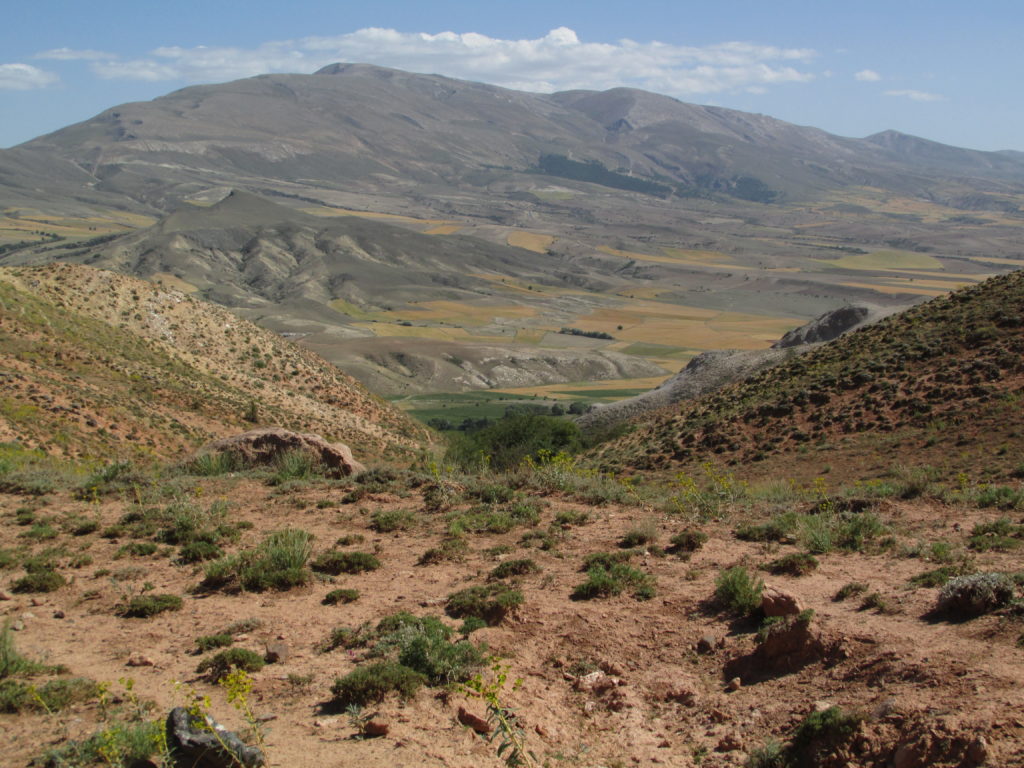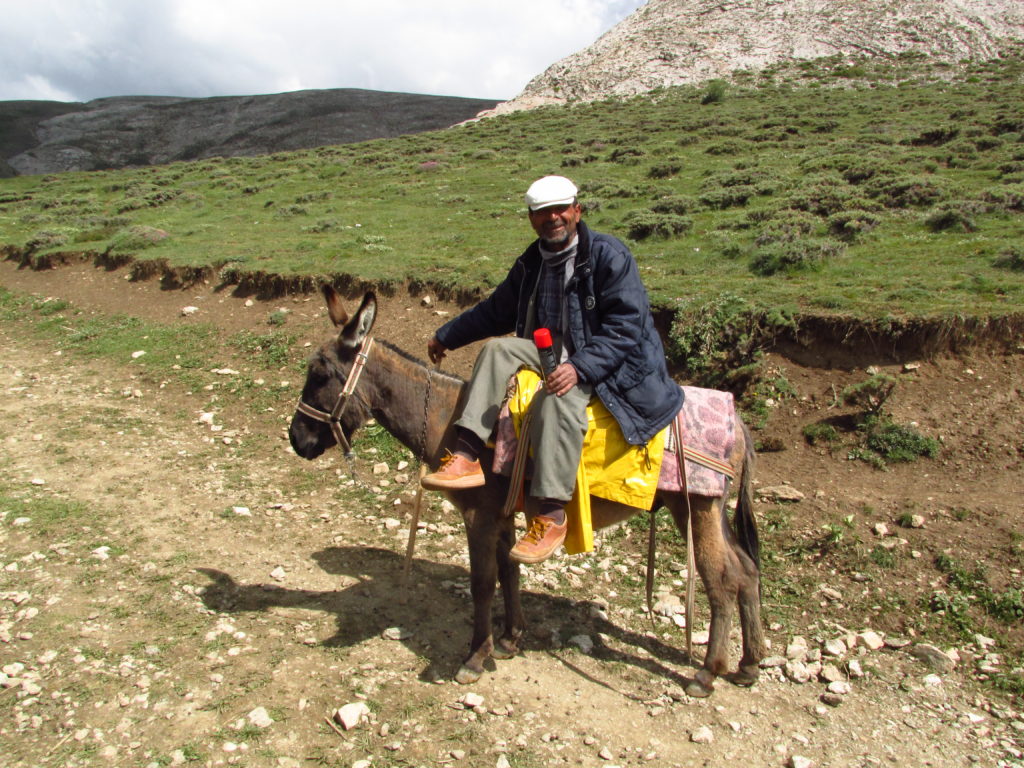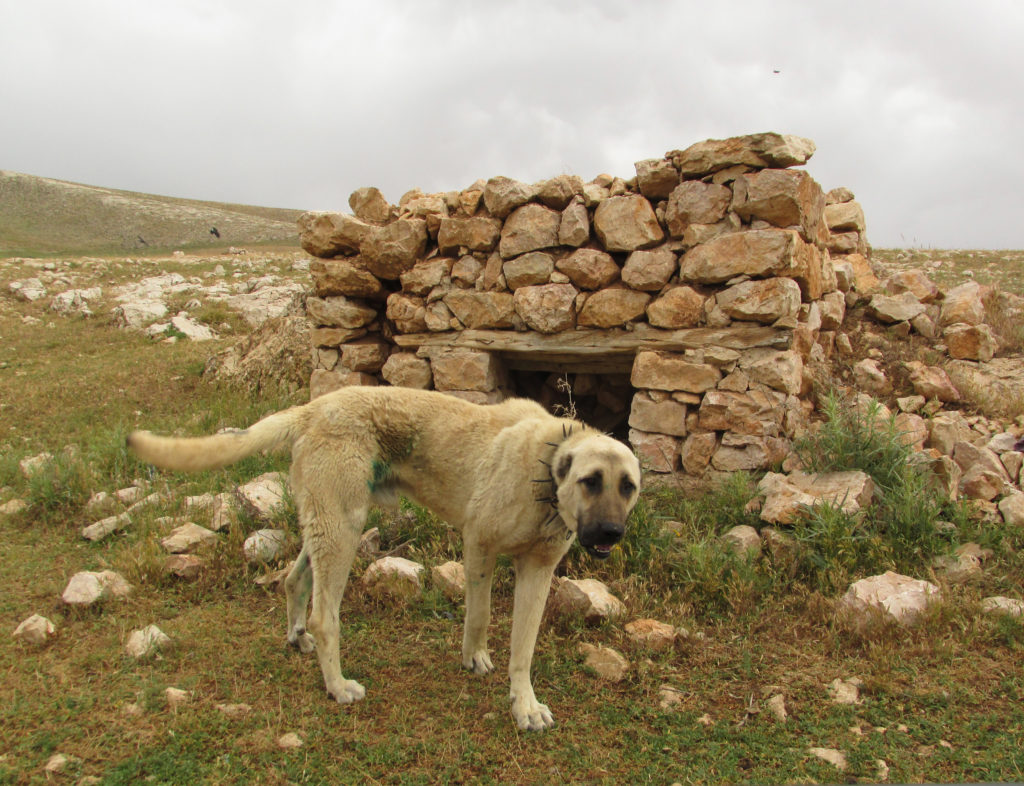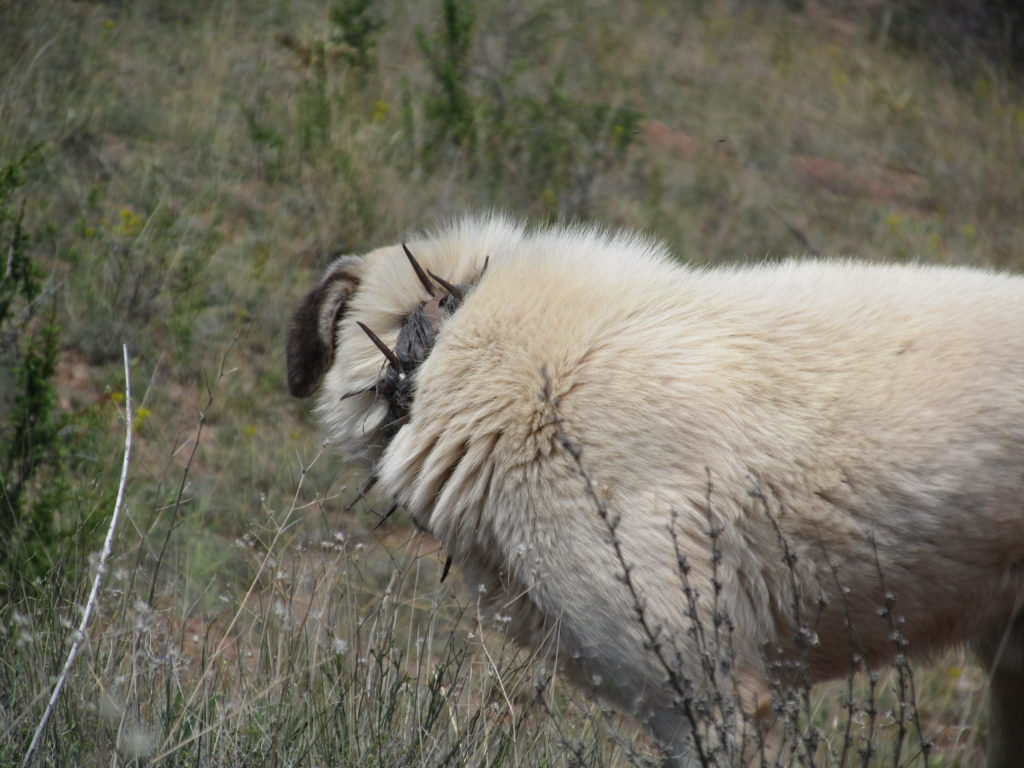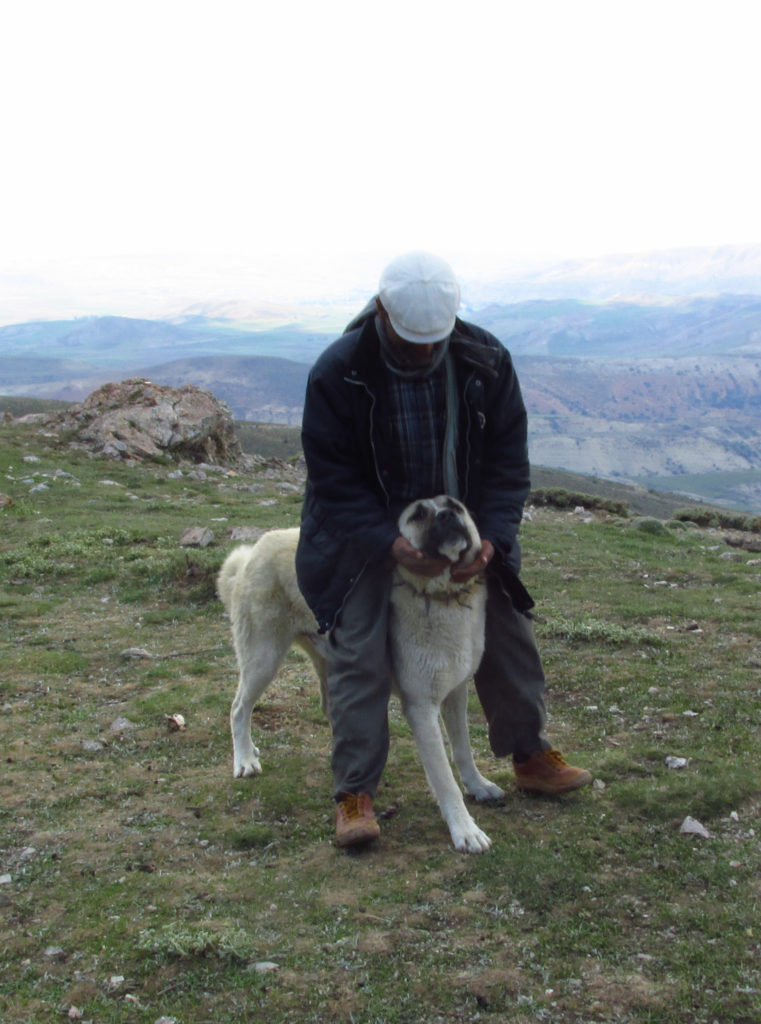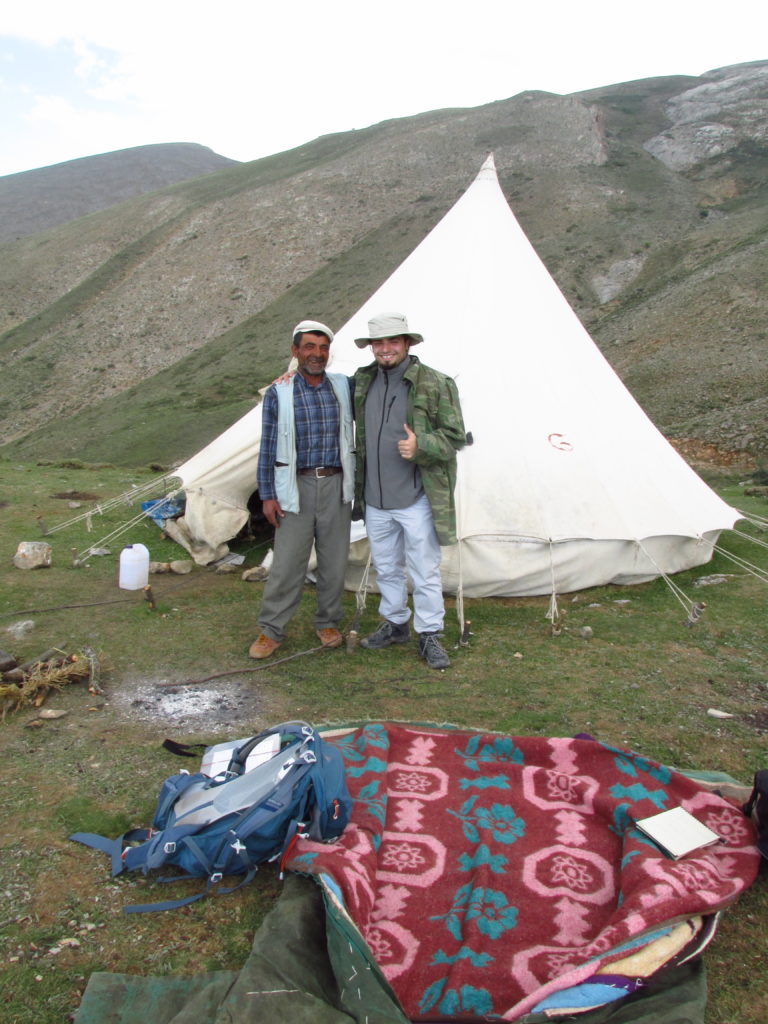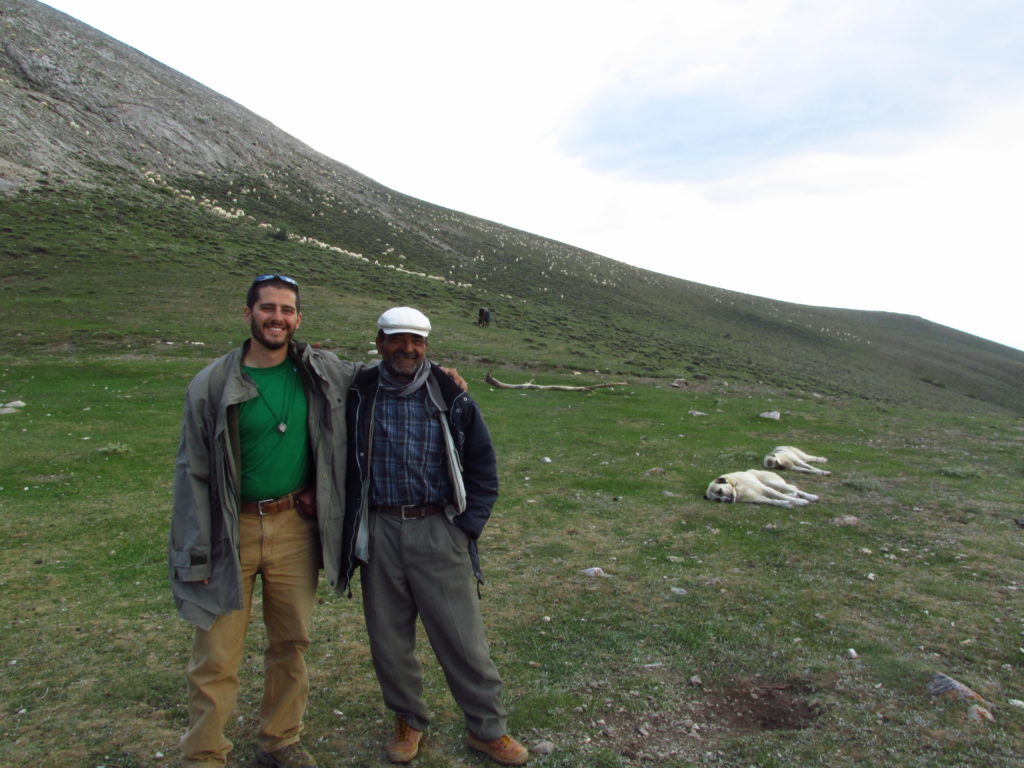Mike Darin is a PhD student at Northern Arizona University. He uses a range of geologic techniques to investigate geologic problems involving upper crustal deformation, oblique strain, and plate boundary evolution. You can read more about his research here. His favorite rock is mylonite.
My doctoral research at Northern Arizona University involves using both classical and cutting-edge geological methods to understand complex interactions between tectonic plates on Earth. This work, like much field work in the geosciences, is not unlike that of a detective. The particular “crime scene” I’m investigating is central Turkey, and we have some information from previous investigations about what went down here, but not the whole story. For the last 30–40 million years, the Arabian plate has been colliding with Asia, causing large mountains to rise at the point of contact between the two continents. Although Arabia is still ploughing its way north today, the mountains in central Turkey are no longer being forced skyward; instead, virtually the entire country of Turkey is being pushed towards the west, extruded like a watermelon seed getting squeezed out by the impinging Arabian plate in the east. Some of the clues as to how and when that transition took place are so large that the only way to recognize them is to cover a lot of ground and observe and record as much as possible about the nature and disposition of the rocks where they’re exposed. This is just one way to describe geologic mapping, which is the most fundamental tool available to understand the geologic history of any region; not to mention my favorite.
My very first day of geologic mapping in Turkey was a bit exhilarating, a tad frightening, and all around unforgettable. I had just arrived in the country for the first time one week prior to attend a workshop with other geoscientists who were also working there. We spent a few days driving all over central Turkey mostly interested in geology, but getting a healthy dose of history and culture here and there. I learned that, much like being American, being Turkish involves much more than just being a citizen; it’s an identity. The country is a true melting pot of culture and ethnic heritage brought there by people from every part of the Middle East and Eastern Europe. I was quickly falling in love with the pristine landscape, the warm and genuine people, and the freshest bread and tea I had ever enjoyed. But I was anxious to strap on my boots and get mapping in such an amazing and unfamiliar land.
When beginning any new mapping project, it can be difficult to decide where to start. Like most geologists who think in terms of time and events that happen in sequence, it makes the most sense to begin at the beginning. This means starting with the oldest rocks in the area, and then working your way “up-section”, or up into progressively younger rocks that were deposited after, and generally on top of, the older ones. Using previous work from Turkish geologists who made smaller scale (i.e., less detailed) geologic maps in the 1970’s and 80’s, I picked a broad and beautiful valley with excellent exposures of most of the rock units in my study area. On one side of the valley, a prominent mountain called Hınzır Dağı was made up entirely of marble and represented the oldest rocks in the area. In the adjacent valley, younger sedimentary rocks deposited on top of the marble were tilted and folded and exposed for a long distance, making it a great location to start documenting the history of deposition and subsequent deformation caused by the collision of Arabia. My field assistant, Barbaros, was an enthusiastic geology student from Middle East Technical University in the capital, Ankara. Although he was born in Turkey, he had also never been to this region in the center of his country, which made the trip an adventure for both of us. We loaded our backpacks with water, strapped on our compasses, hammers and notebooks, and set out for the high ridges of the Hınzır Dağı to begin our traverse through the sedimentary sequence from bottom to top ¬– past to present.
On our way up the mountain we saw many interesting things from a geologic perspective, but the most unexpected and memorable wasn’t something in the rocks; it was lurking on them. There are very few people living in this part of Turkey, whose land rests at a comfortable elevation of four to six thousand feet with rolling wheat fields tucked into every valley and corner of the landscape. Small villages are empty during the day while farmers and shepherds sow their fields and graze their sheep, goats, and cows. That said, there’s really nothing to worry about here in the country’s breadbasket, except for one thing: the infamous Kangal dogs. You may know these dogs as Anatolian shepherds, well known for their enormous size, dark ears and snout, and extreme loyalty to their owners. Here in Anatolia (another name for Turkey), they are named for the small town of Kangal, located just 60 miles east of where Barbaros and I are mapping. You might say that we were in the heart of “Kangal Country”, with at least one of these huge dogs guarding every flock of sheep in the mountains of this region, and throughout much of the Middle East and North Africa for that matter. When I was first told about these dogs by my colleagues the week before, they sounded like creatures born out of a mythic tale: ferocious beasts standing taller than a man; thick necks adorned with heavy spiked collars; faster than a horse and more vicious than a viper. We quickly learned on that first hike up the Hınzır Dağı, that the legends were very true…
It was just past midday, and as Barbaros and I came up and around a corner to a view of the upper slopes of the mountain, we stopped suddenly at the sound of distant barking. There was nothing but rocks all around. I looked upslope, and way up near the ridge was a patch of rock with tiny white spots all over it. I watched intently to notice that some of the spots were moving ever so slowly, my ears now picking up the faint clutter of cowbells in the same direction. It was a flock of sheep – oh no; it was a flock of sheep. And their protectors wasted no time letting us know that we weren’t welcome on their mountain. We were so close to the marble unit, the oldest rock in the area and the point where we’d start documenting the sequence of rocks, but it was just a bit higher on the slope which now seemed completely off limits. After a minute of considering whether to continue or turn back, we spotted something making its way down to us. As it got closer, he could see that it was a shepherd riding a donkey side-saddle, making quick time to meet us on the faint walking trail ahead. As he got close he began shouting at us in Turkish. Barbaros listened as I waited with anticipation to know if he was angry or not…
“What is he saying!?” I asked Barbaros.
Barbaros replied, “He says, ‘If I had not been so close to you and come down here so fast, you would have been killed’.”
Incredulously I responded, “Killed?? What did he really say?”
“That’s exactly what he said man, I’m not kidding,” said Barbaros widening his eyes, “we would have been killed!”
“Ask him why!” I pleaded anxiously.
After a short exchange between the shepherd and Barbaros, he explained to me that this shepherd’s camp was just above us and out of sight between us and the flock, and that the shepherd had not one or two, but five Kangal dogs at his camp. If we had continued on the trail upslope, we would have walked right into a frenzy, since the dogs would have surely attacked what they could have only considered to be intruders.
I was stunned. And never more grateful to see a man on a donkey in my life! After sharing a round of nervous laughter at both our ignorance and incredible fortune, the shepherd introduced himself as Akkaş (“Ah-kahsh”) and graciously asked us to join him at his camp for tea and cheese. He had never met guests from as far as America or even the capital of his country on the high slopes of these mountains, and he would not take no for an answer. We gladly accepted, although the only problem was the gauntlet of Kangals waiting for us above. As we got to within a couple hundred meters of the camp, Akkaş left his donkey and walked in front of us. He warned us that as we approached we would need to stick very close to him, assuring us that the dogs would obey him and not bite us. “Ok, so how close is close enough?” I asked Barbaros, who translated it back to Akkaş. Showing us with his hands, he motioned for us to walk single file, chest to back, with no space between us. As we scrunched together and came into view of the dogs they charged towards us, circling and barking violently. My heart was pounding in my chest, which I’m sure Akkaş could feel since it was pressed tightly against his back. Akkaş kept his cool, shouting back at the dogs and swinging at them with his crook as we creeped into camp. The only thing keeping me from becoming kibble on some faraway mountain in the Middle East now was this shepherd and his stick. The dogs swarmed us at an arm’s distance, jumping and barking wildly. They were truly enormous dogs, and their collars were wicked: a thick ring of steel around the neck with huge steel spikes around their circumference. I would find out later that the spikes are designed to protect the dogs from wolves, who stalk the flocks. When encountering the Kangal, the wolf will naturally go for the throat and impale itself (ouch).
My chest thumped harder as the barking was now concentrated behind us, where there was no protection from Akkaş. As we approached the tent, Akkaş instructed us to sit down to show the dogs that we were not a threat. As soon as we popped down the dogs immediately stopped barking as if it had been choreographed. Then they each wandered off a few paces, crumpled to the ground in a heap, and before they even hit the dirt, literally “fell” asleep. Barbaros and I looked at each other and the sleeping monsters in utter disbelief.
As our pulses unwound, Akkaş started a fire in seconds and placed a charred tea kettle directly on top. He laid out a blanket for us and asked us about our purpose and intentions in these mountains. Through my translator, Barbaros, we shared a few stories and enjoyed our tea as the clouds and wind rolled in to chill us. Akkaş happily gave us each warm jackets and served us cheese, olives, and fresh spring water from even higher up on the mountain; a place we could not visit ourselves because, according to Akkaş, there were, “many more flocks and many, many more dogs that would surely kill us up there.” Barbaros and I were humbled by his hospitality, which meant so much coming from a stranger with so little to subsist on in this remote landscape far from the nearest village. From what I would learn in my three summers in Turkey, this was a generous and rather common gesture toward travelers, especially high up in the Anatolian mountains where only the sheep and cows and geologists graze.
![]() This work is licensed under a Creative Commons Attribution-NonCommercial-ShareAlike 4.0 International License.
This work is licensed under a Creative Commons Attribution-NonCommercial-ShareAlike 4.0 International License.

